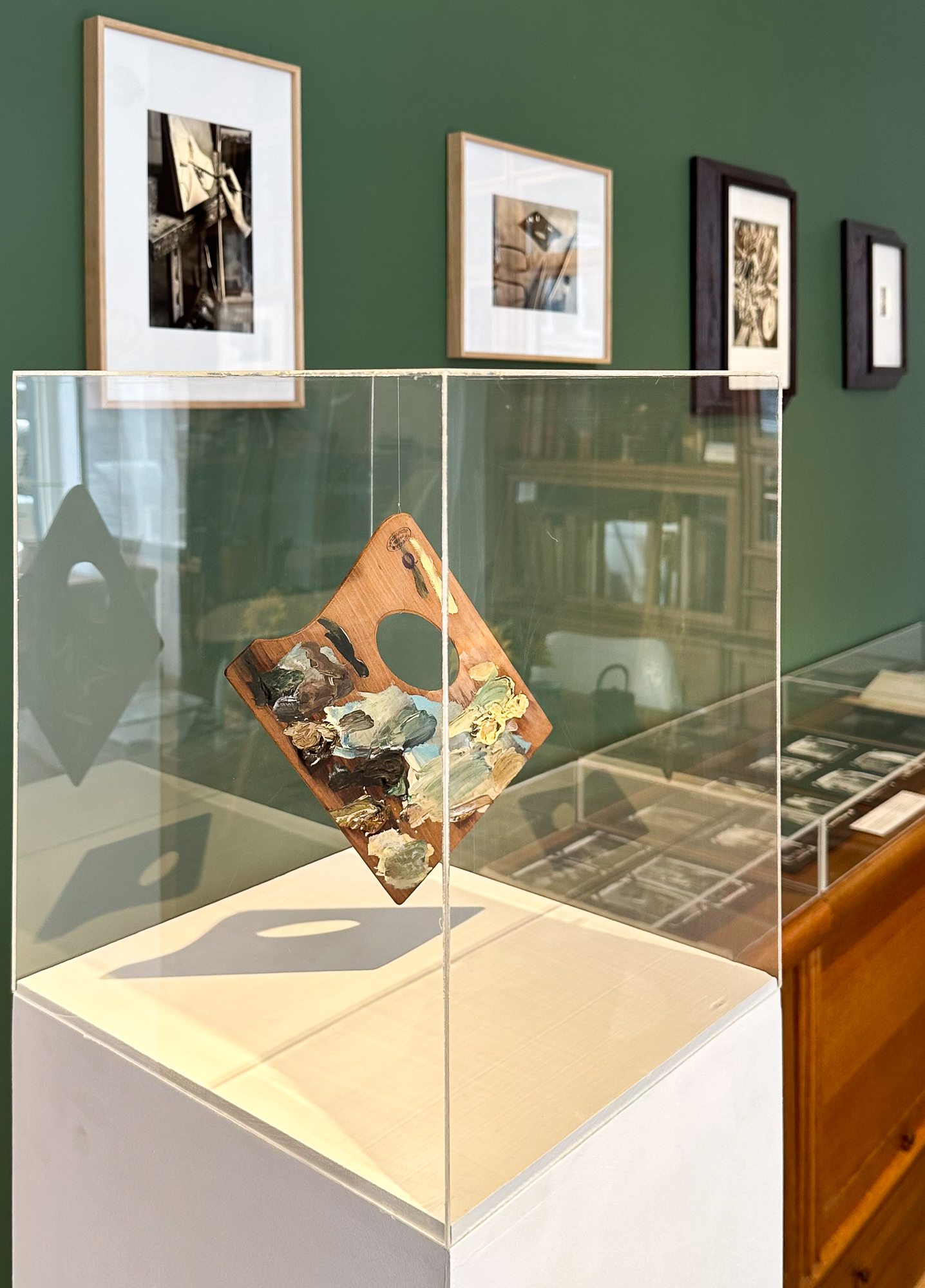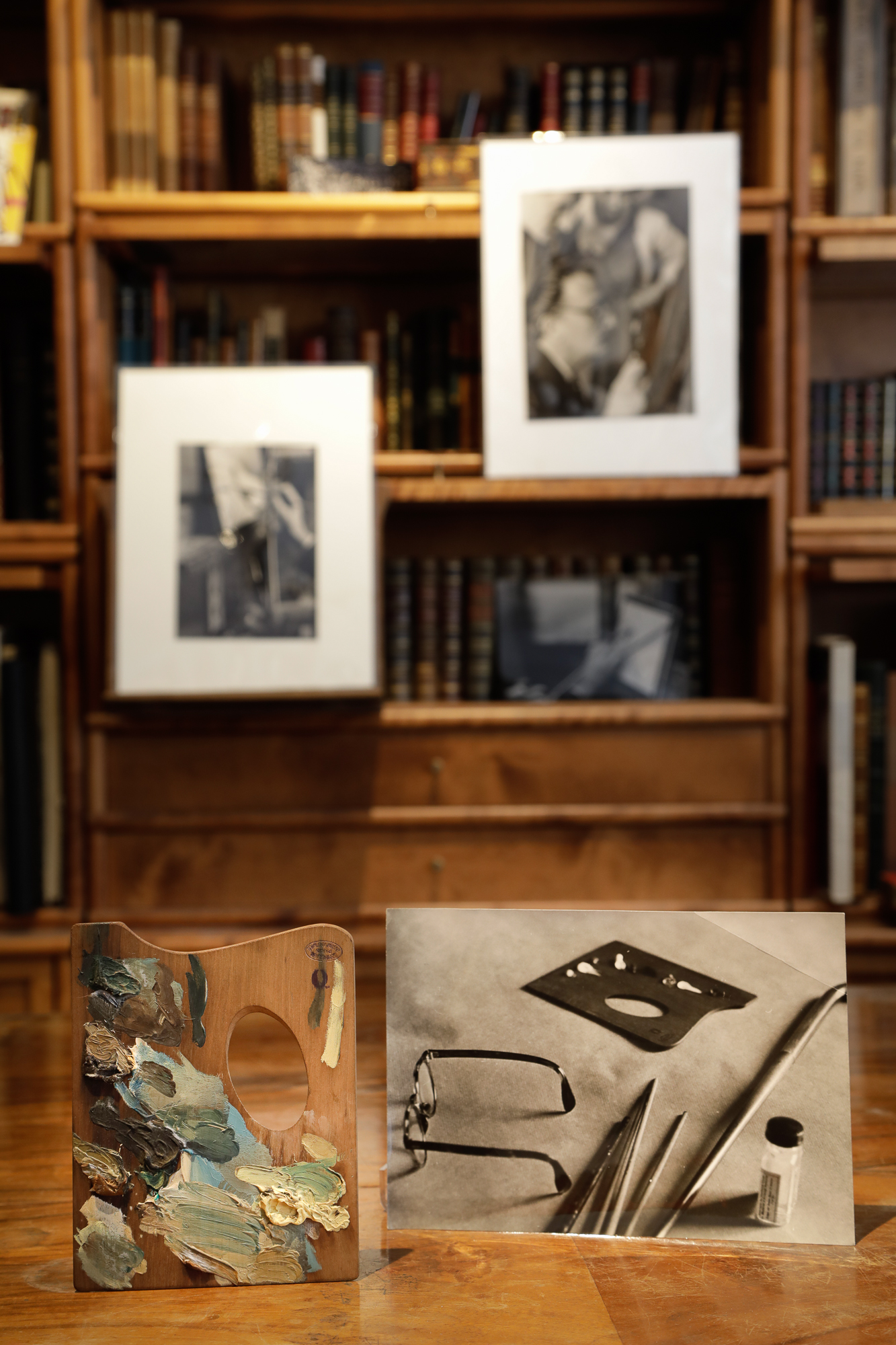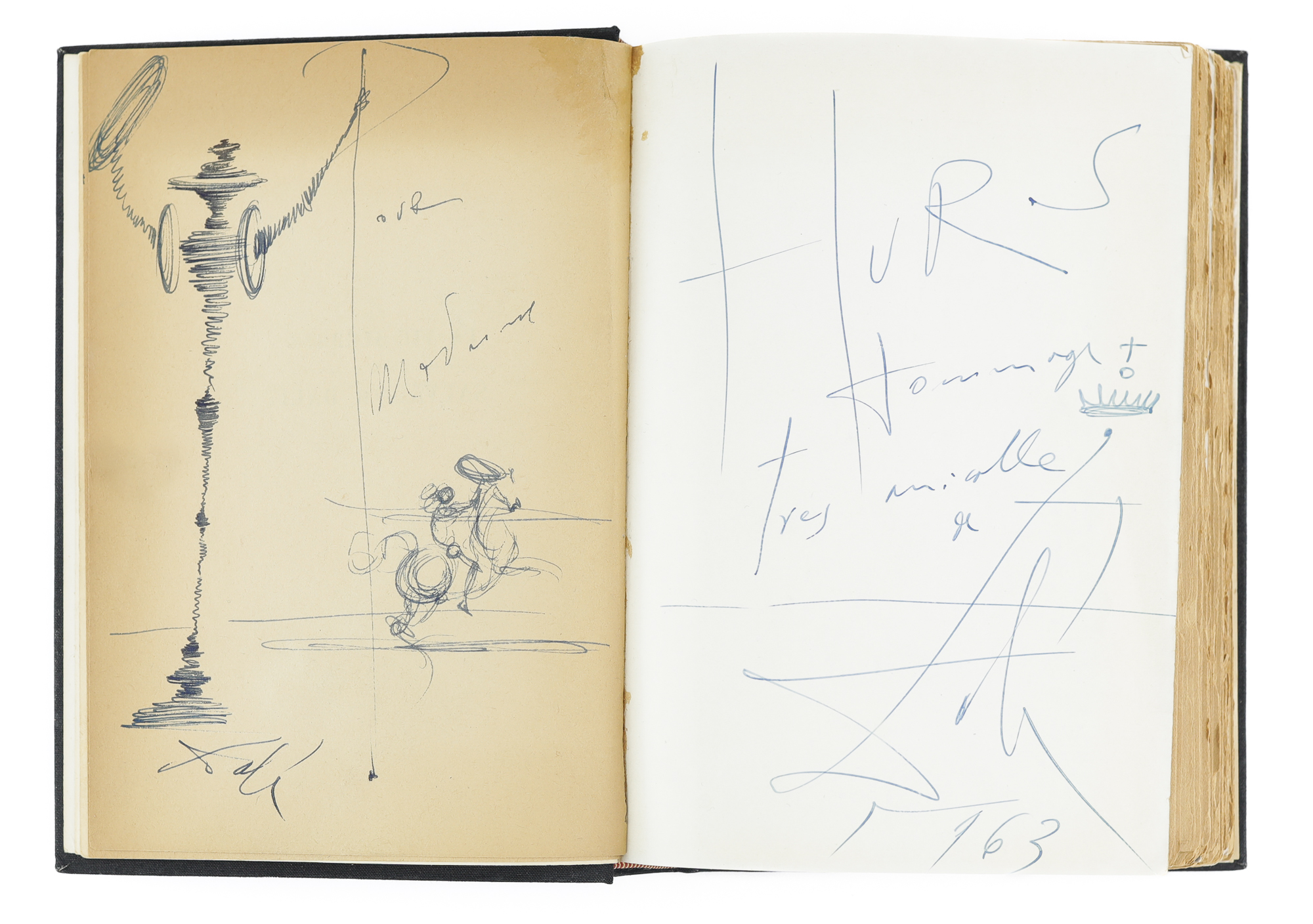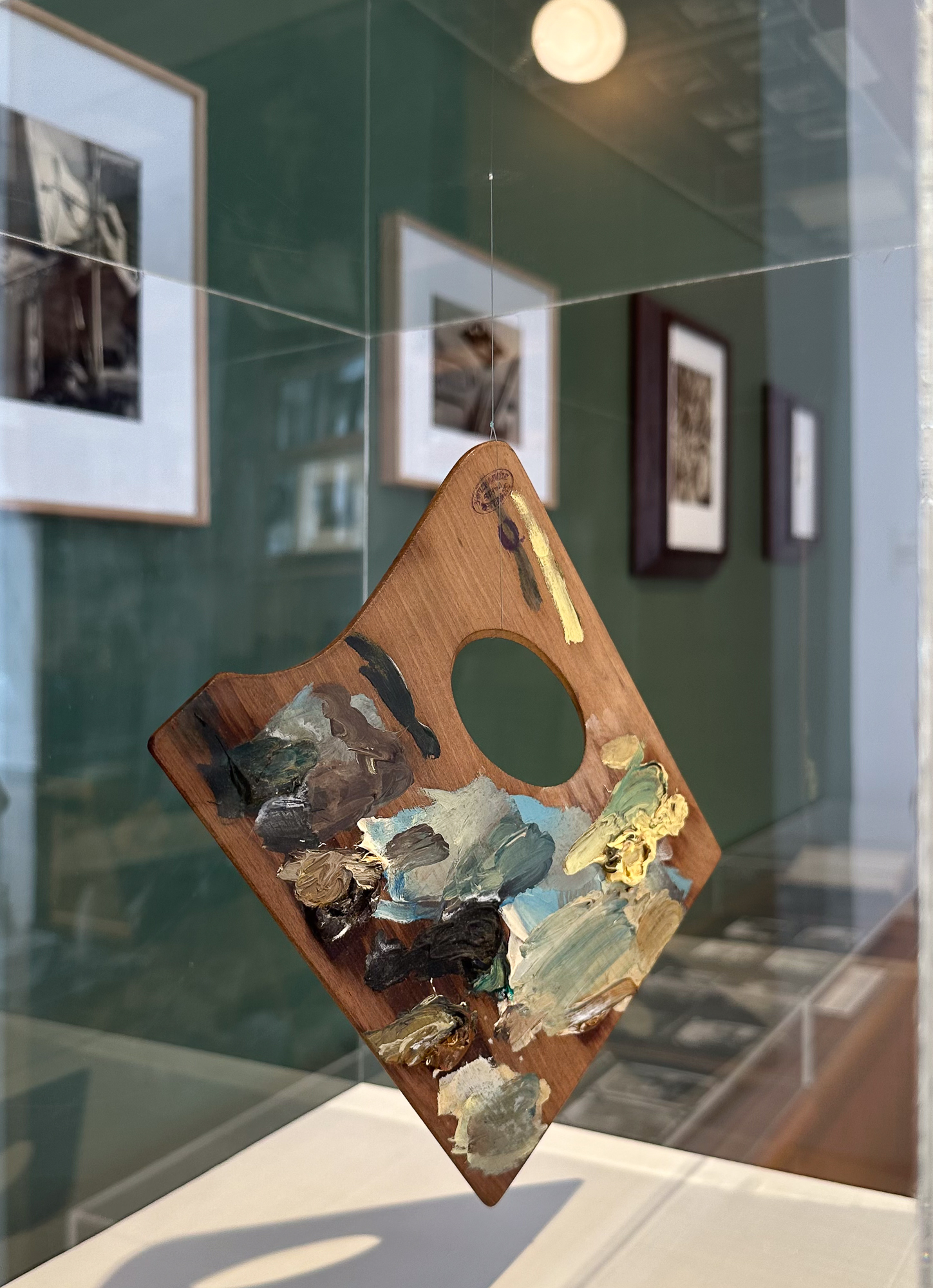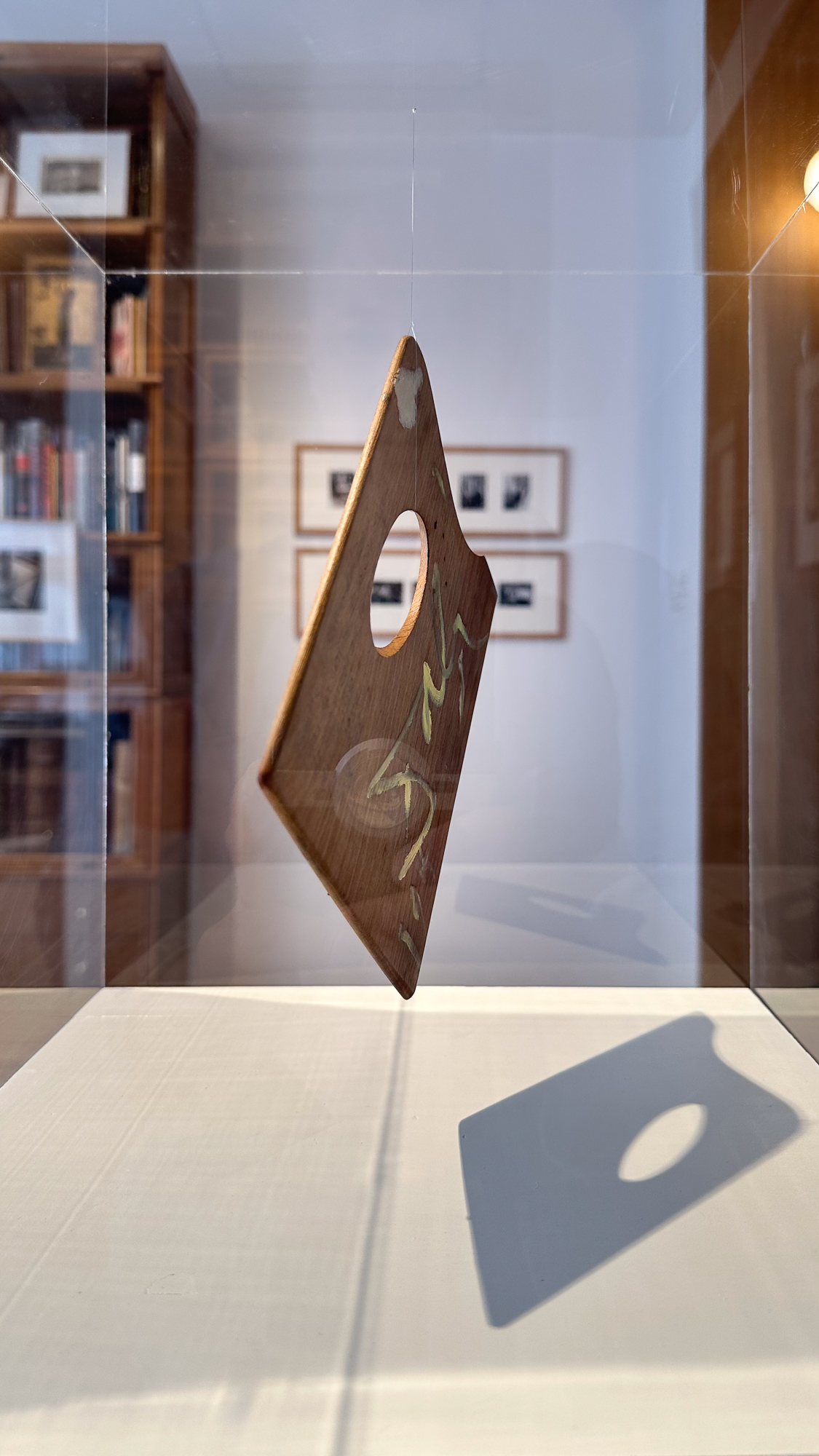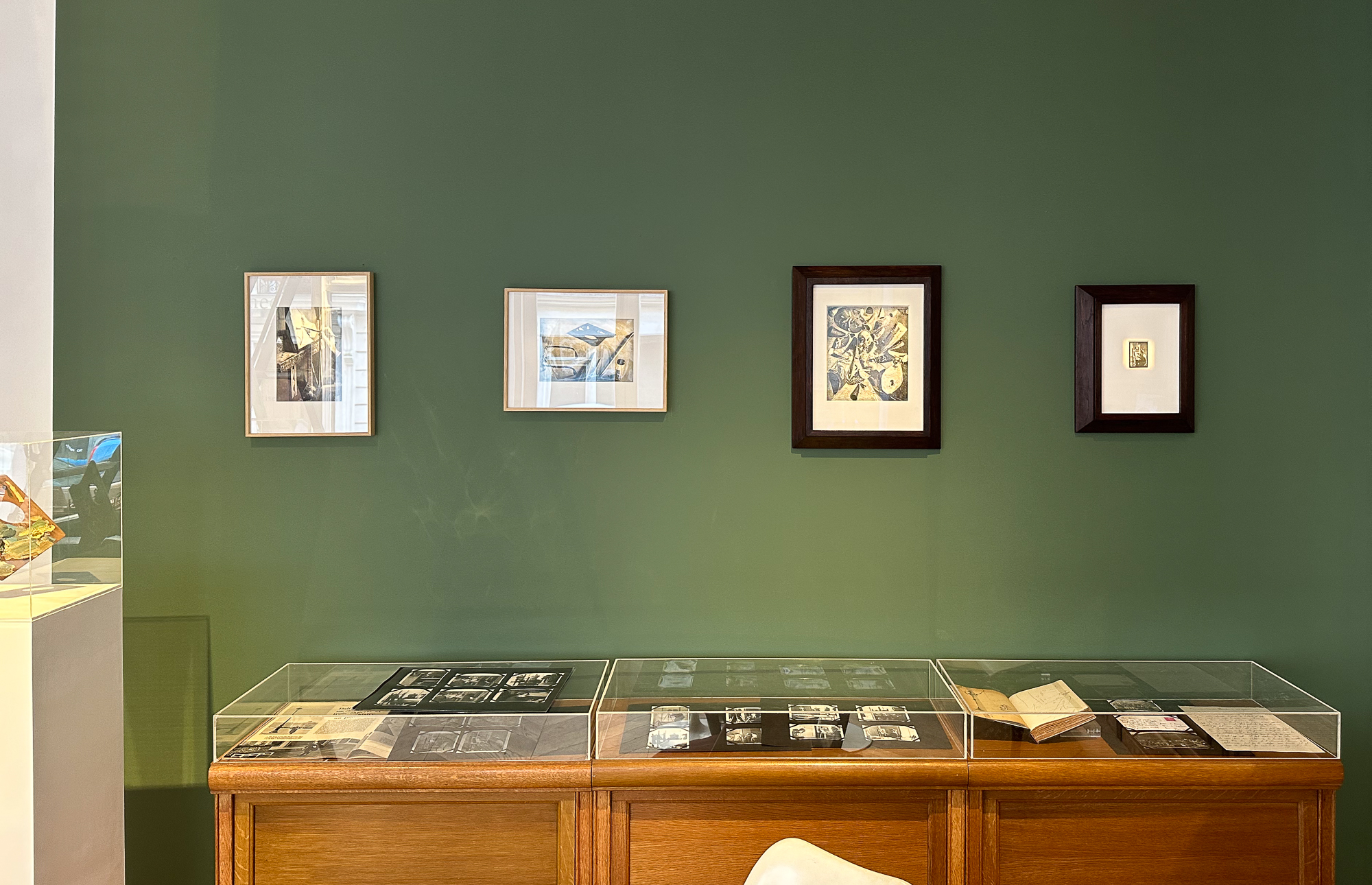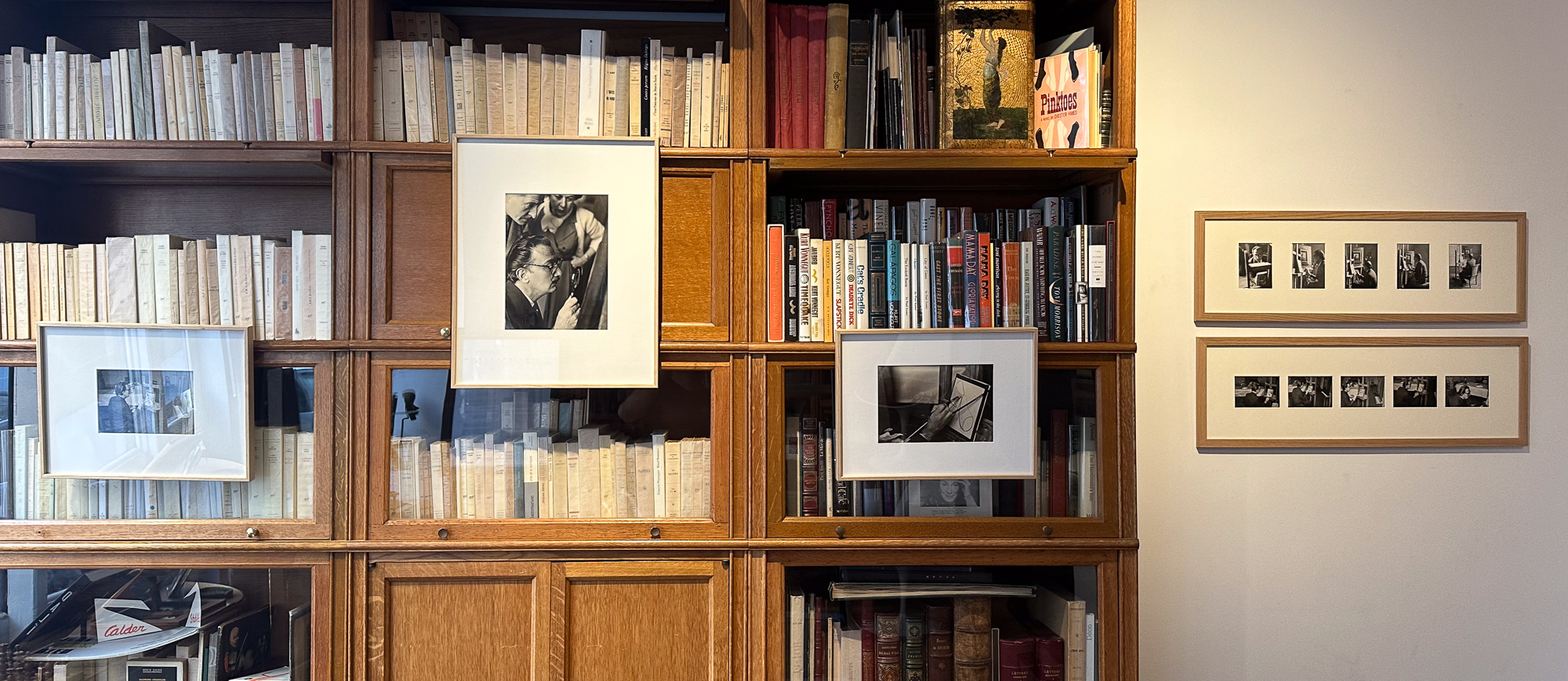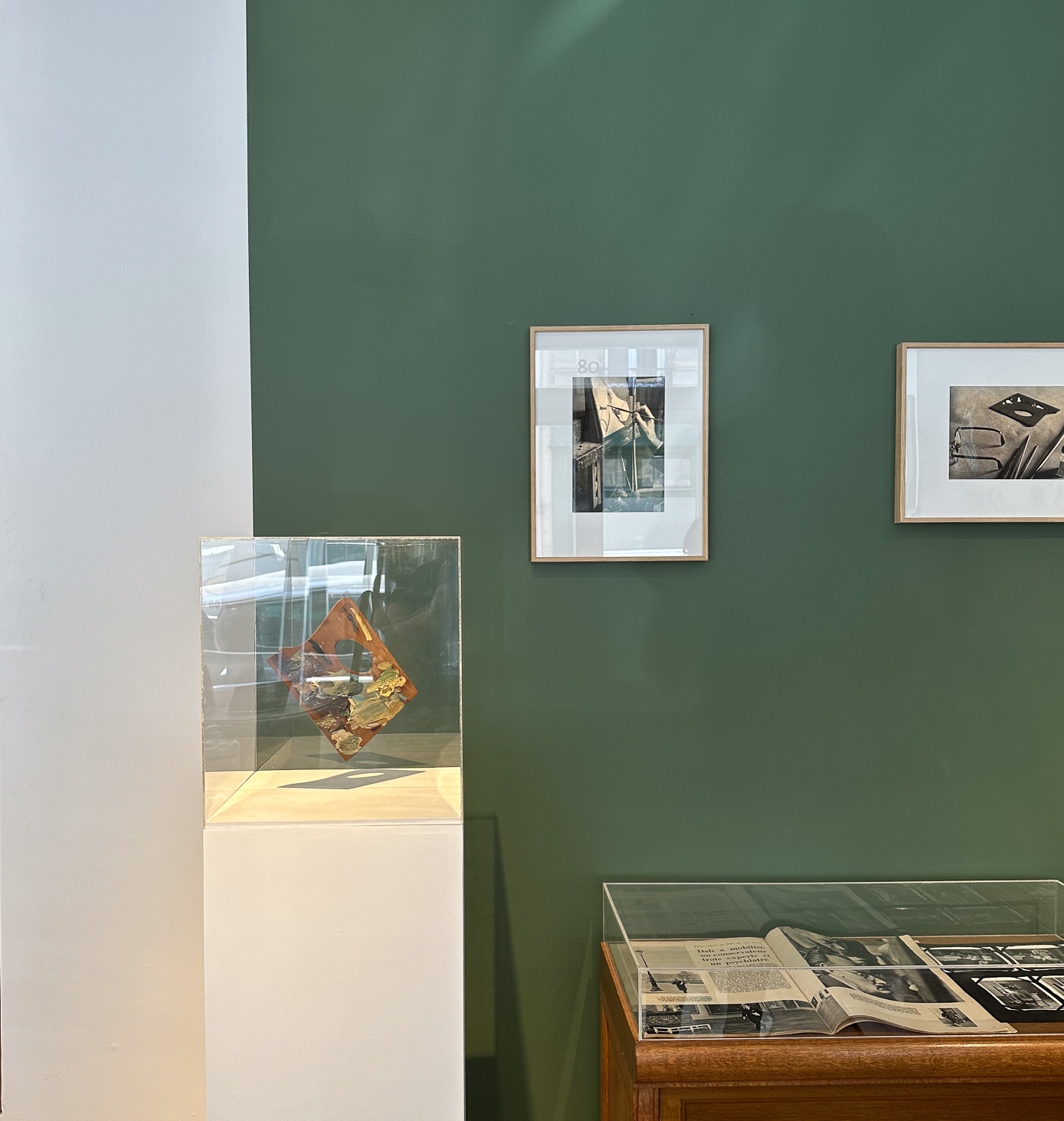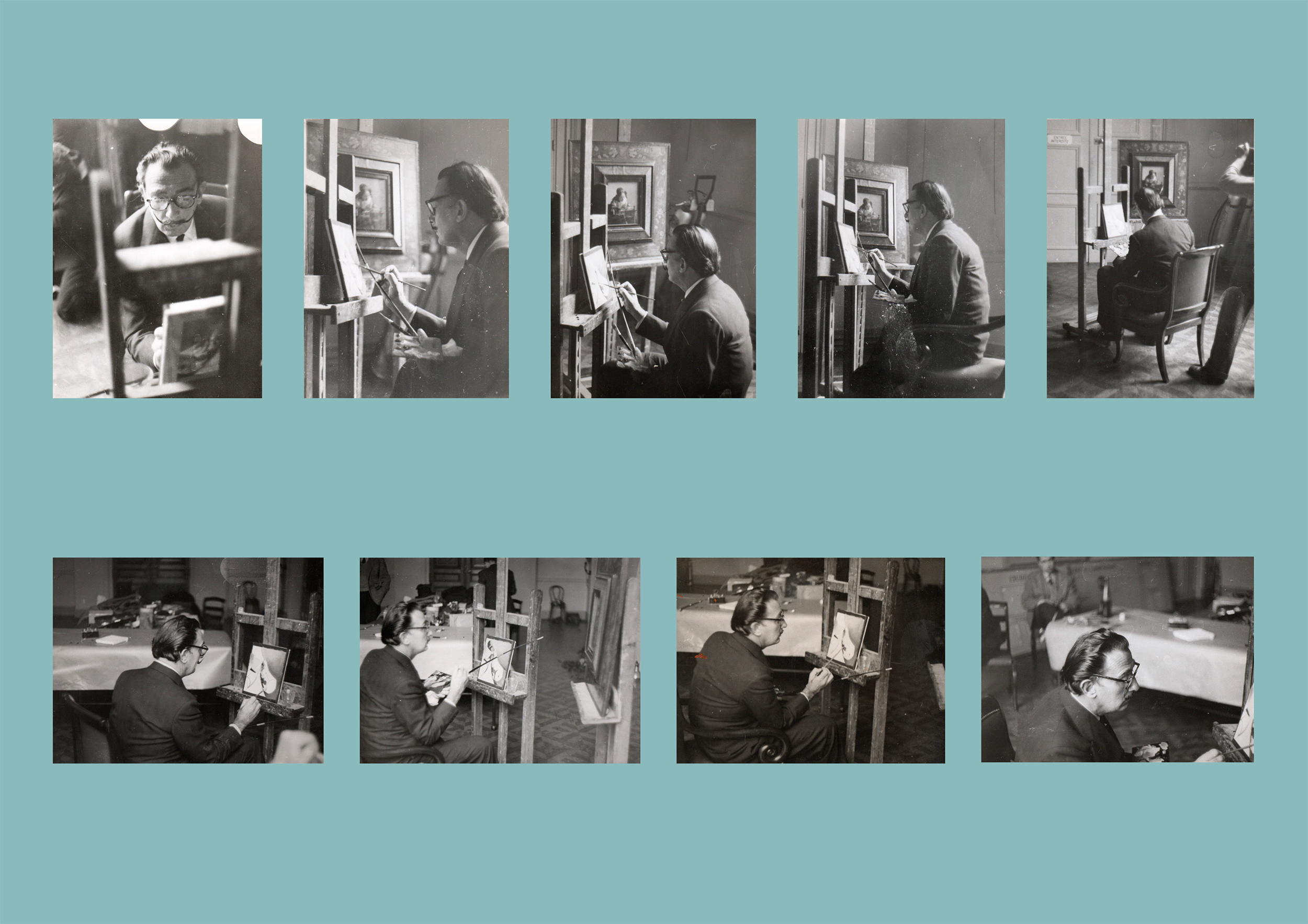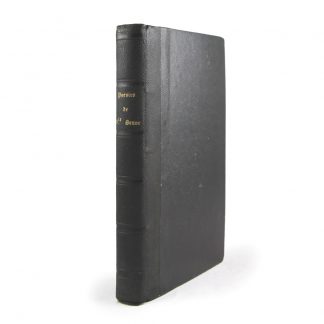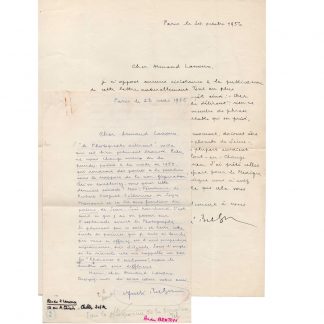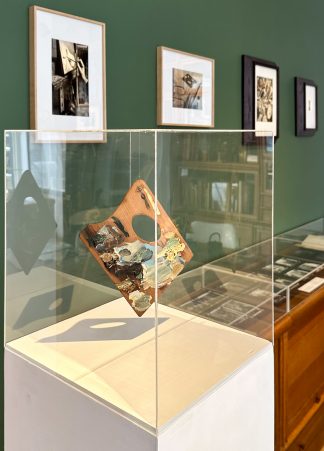Description
EXCEPTIONAL ARCHIVE about the genesis of one of Salvador Dalí's masterpieces, A paranoid-critical study of Vermeer's The Lacemakerheld at the Guggenheim Museum in New York.
IMPORTANT SOURCE All the pieces on display come from the archives of Magdeleine Hours, a friend of Salvador Dalí and director of the Louvre Museum Laboratory, thanks to whom Dalí was able to make his "copy" of The Lacemaker by Vermeer.
Includes :
- Dalí's signature palette, the only vestige in colour of the first stage of the A critical paranoid study of Vermeer's The Lacemaker. Dalí's palettes are extremely rare.
According to Nicolas Descharnes, there are only 7 other known wooden pallets, of which only 5 are signed. The pallet we are presenting is the only one to have been used in a performance project;
- A double photographic testimony, partly unpublisheddocumenting a performance by Salvador Dalí at the Louvre Museum: 5 large format prints by Robert Descharnes annotated on the back by Magdeleine Hours, and 35 previously unpublished photographs taken by members of the Louvre Museum Laboratory.
- A large autograph drawing on a double page - contained in Magdeleine Hours' copy of The secret life of Salvador Dalí
- photo, correspondence and autograph testifying to the friendship and fruitful collaboration between Magdeleine Hours and Salvador Dalí.
The original Dalí pieces we are presenting are registered in the archives of Nicolas Descharnes - Salvador Dalí's official expert (references will be given to the buyer).
A certificate of authenticity may be obtained from the latter at the buyer's expense.
A catalogue presenting the archive can be consulted on our website; a version containing details of the items is available on request.
PROVENANCE
An art historian, epigraphist and archaeologist, Magdeleine Hours joined the laboratory of the Musée du Louvre in 1933, the first official body devoted to the scientific analysis of paintings. She became its director in 1946.
Her contribution to the success of the project was invaluable: she extended the laboratory's field of expertise from paintings to archaeological remains, set up partnerships with other scientific bodies, and above all publicised her work through a series of exhibitions. They were so successful that the way they were presented - in which scientific documents were compared with the original work - became standard practice.
Through the intermediary of Montserrat Dalí and her husband Camillo Bas, Madgeleine Hours acquired a property in Cadaquès that had belonged to Anna-Maria Dalí, the artist's sister. She met Salvador Dalí in July 1954 and befriended him. Magdeleine Hours will make available to her for copying The Lacemaker by Vermeer, now in the Musée du Louvre. At her friend's request, she also carried out X-ray analyses on theAngelus his discoveries helped him to support the paranoid-critical thesis he set out in The tragic myth of Millet's Angelus (1963)
AROUND THE PARANOID-CRITICAL STUDY OF VERMEER'S LACEMAKER
La Dentellière by Vermeer features prominently in the procession of "Dalinian" images that make up the short film An Andalusian dog (1929), made in collaboration with Luis Buñuel. Invoked in the early years of his "Surrealist conversion", she accompanied Dalí on a major project, The Wonderful Adventure of the Lacemaker and the Rhinoceroswhich occupied him from 1954 to 1961, when he extended the field of application of his "paranoid-critical method".
Combining painting, film, photography and performance art, this total work began in December 1954, when Dalí announced his desire to make a copy of La Dentellière. He called on his friend Magdeleine Hours, director of the museum's laboratory.
of the Louvre, who agreed to make Vermeer's painting available to him.
Dalí went to the museum accompanied by three journalists, the photographer Robert Descharnes and Dr Pierre Roumeguère, a psychiatrist from the Faculty of Medicine who had diagnosed him the day before with "... a serious illness".a chronic simulation of the pathological pride known as paranoia". We have La Dentellière in front of his easel in the laboratory. There, in front of the curator of paintings, Michel Florissoone, and Magdeleine Hours' team, he contemplated the canvas for more than a quarter of an hour, announced that he had analysed the lines of force concentrated around the needle, settled down at his easel and painted... three rhinoceros horns in less than an hour. (Days in France2-9 December 1954)
This first phase of the study completed, he left behind the astonished audience and his palette, which he signed and presented to Magdeleine Hours' son.
For many, the correspondence between the original work and the triple-horn painted by Dalí seems remote. However, Magdeleine Hours, in her memoirs, emphasises the identity of the colours in the palette:
"Very quickly, the painter (the palette bears witness to this), with a certain mastery, put Vermeer's tones and colours on the palette: the yellows, blues and greys were prepared to make a work on a stretcher of a smaller format than that of La Dentellière and for which he set up the composition; measuring the proportions with a long stick (a rush). We then saw the birth of a small painting with the colours and chromatic correspondence of Vermeer, but which was only remotely reminiscent of La Dentellière. It was a 'rhinoceros horn' which, for reasons that escape me, was apparently, in Salvador's mind, the equivalent of the composition in La Dentellière. The Laboratory was slightly disrupted, with my colleagues opening their eyes like French doors, unaccustomed to seeing an artist creating in our midst.
I have to say that Dalí was very kind: he signed a series of autographs and sketches. It was at the end of that memorable session that he gave me his palette for 'the painter Laurent', my son, to thank him for the portrait he had done of him two or three years earlier". (A Life in the Louvre, p. 134)
As far back as 1954, Dalí's ambition was to bring together a series of performances based on The Lacemaker in an unfinished film, The prodigious adventure of the lace-maker and the rhinoceros. The session was filmed and photographed by Robert Descharnes, who collaborated with the painter on the project. However, he was not the only one to bring a camera, and previously unpublished shots of the event were taken by members of the laboratory.
It was in the spring of 1955, at the Vincennes Zoo, that Dalí carried out the second stage of his project. Filmed once again by Robert Descharnes, he installed in the enclosure of the rhinoceros "François" a huge printed reproduction of The Lacemaker and tried to provoke the animal into piercing her with its horn. He was unsuccessful. Dalí nevertheless completed his Study Sitting on a wheelbarrow, "gored" with a stump of bread balanced on his skull, he adds an atomically decomposed lace-maker to the intersection of the lines of force - before perforating the printed reproduction with a narwhal horn.
Interviews, films, happenings, lectures - one of which, given at the Sorbonne in December 1955, involved Vermeer and the rhinoceros in a famous demonstration of paranoid-critical activity. Dalí fully integrated the spectacle into the project of the work, to the extent that he is frequently cited as a "precursor of performance art" and one of Warhol's main influences (Dalí, 2012. p.12). In the catalogue for the Dalí exhibition held at the Centre Pompidou in 2012-13, Jean-Hubert Martin writes:
"The term arteur is perfectly suited to Dalí's work to designate the register in which he puts himself on stage. Not content with creating works in an incredibly innovative vein, he felt a compelling obligation to publicise the ideas that had generated them and, more broadly, to disseminate a new interpretation of the world."
He uses a neologism coined by Jean-Clarence Lambert in the 1960s to describe a mode of expression pioneered by Dalí, in which artists "intervene themselves as actors in a mode that lies at the crossroads between the visual arts and performance" (p. 41).
The Amazing Adventure of the Lacemaker and the Rhinoceros highlights the "total" nature of Dalinian work, which aims to integrate the project of the work with the artist's material production. This archive plunges us into one of Dalín's earliest and most pervasive obsessions - and documents the initiating stage of a total work, the precursor of performance art.
